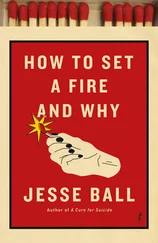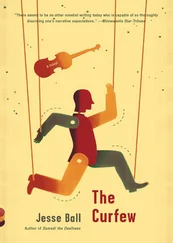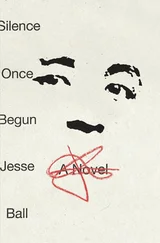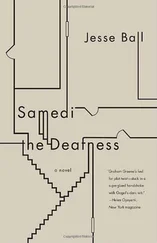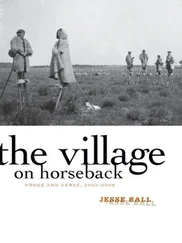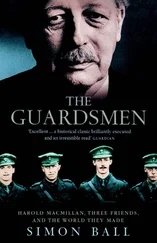Sif blushed and gave him an angry look.
— That was definitely some other girl! How awful.
— Oh, said the pamphleteer. I thought that was you.
— No, said Sif. We met at that party, the one given by that photographer who leaves cadavers in public places and photographs the neighborhood on time lapse to see how the patterns of movement change.
— Cors Vanderwall, said the pamphleteer. That sick bastard.
— Yes, him. I had met him while hang gliding on Maui. He has a house there.
— I’m sure he does, said the pamphleteer crossly. He’s had no end of good luck.
— Anyway, you had met him somewhere, and so we were both at the party. I was out on the terrace smoking a cigarette. Someone inside had started a discussion about the death penalty. Apparently Cors had managed to get the body of a fellow who had been killed by lethal injection in Texas, and he was intending to put the body on the ground either in Times Square or in Astor Place. He hadn’t decided which would be better. The whole thing made me feel sick to my stomach, so I went out to the terrace. You were sitting there, writing in your notebook.
— The World’s Fair Shorthand, said the pamphleteer proudly. I had just begun it. As a child, they could not keep me from wells.
— As a child, they could not keep me from wells , eh? said Sif. I read that one too. It’s the last one in that little Irish book.
— But which book, and which Irishman? asked the pamphleteer.
Sif shook her head.
— It doesn’t matter. The words are more important than their author. Anyway, it was then that I asked you to read me what you had been writing, and you told me the most peculiar story about a goat.
— Oh, my God, said the pamphleteer. I totally forgot about the goat.
— Do you mean to say, asked Sif, that you didn’t put the goat in?
— Not yet, said the pamphleteer. But there’s still time. That was the goat that could do puzzles, right?
— Yes, said Sif. I believe it could also crochet.
A woman came into the room. She was very tall and wearing a long leather apron. At her side was a large cleaver, hanging from a loop on the apron.
— Hello, she said. You pay first. One hundred dollars each.
— A hundred dollars? said the pamphleteer to Sif. Really?
— Yes, she said. This is a nice place.
Sif untied a scarf that was wrapped tightly about the smooth upper reaches of her arm and took two hundred dollars out.
— You can pay next time, she said.
The woman accepted the two hundred dollars and tucked it behind her ear. She unhooked the cleaver, raised it up in the air, made a loud shouting noise, and slammed it down into the center of the table.
The pamphleteer and Sif leaped back in their chairs. The cleaver had sunk at least two inches into the tabletop. Now they noticed that upon the tabletop there were many such marks.
— The meal begins, said the woman in a quiet voice that had only ever been used just after slamming cleavers into wooden tables.
She left the room and returned a moment later with a beautiful bottle of wine.
— Chez Margot, she said, and poured them each a glass.
The pamphleteer tasted it.
— Lovely, he said. Just lovely.
The woman disappeared again and returned, this time with figs that had been stuffed with goat cheese and baked while wrapped in thin strips of moist lamb.
— Not bad, said Sif.
She took a bite and leaned back in her chair with a happy, distracted look on her face.
— Did you hear the latest bit of that business with Mora Klein? she asked the pamphleteer.
— No, he said. Who’s Mora Klein?
— The artist, Sif said. You know, she does that drawing, like this.
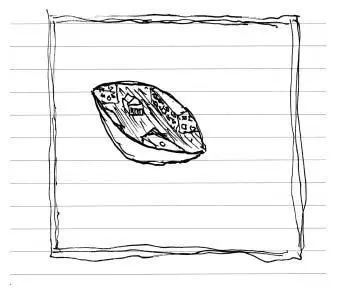
— I think I’ve seen that before, said the pamphleteer.
— Yes, well, anyway, said Sif. It turns out that children who are shown this drawing at an early age, and forced to look at it for long periods of time, say by having it on the walls of a nursery, have had their brains develop differently in such a way that they are able, at the age of five or six, to do complicated math and logic problems in their heads. The only strange thing is that they can’t explain how they know the answers; they just know them. Somehow the relationships between numbers make more sense to these children than they do even to the best mathematicians. Scientists who have studied the drawing say that it has to do with the precise angles involved. Facsimiles and copies of Mora’s drawing are not similar enough to the originals to achieve this effect. Only the originals accomplish it. Thus parents have begun to bring their children every day to the Metropolitan Museum to stare at the drawings for a while. The place has been mobbed. There’s been talk of creating a special viewing room. The price of her drawings has shot through the roof. They were already expensive. Now they simply can’t be bought unless you have more money than a bank.
— Good Lord, said the pamphleteer. What does she have to say about it?
— She won’t talk to the press. She lives now somewhere downtown in New York City and tries to have an ordinary life, but it’s difficult. Apparently international aid organizations are contacting her, trying to get her to start producing her drawings again, this time for charity.
— So, said the pamphleteer, the kids who were looking at these drawings while they were growing up can just take numbers and combine them in crazy ways?
— Yes, said Sif. Although, it doesn’t seem like it will be useful to our mathematics. The kids don’t seem very interested in math. They all think it’s too easy. None of them want to go into it because they don’t understand the way we do math in the first place. They started in a different way, and the ways can’t be combined.
The woman arrived again in the room, this time with a clay case in which had been baked an entire lamb.
— This is koucha, said Sif, getting her fork and knife ready.
The woman returned a moment later with couscous, a little cake, something that looked like ratatouille, and a soup.
— That’s chakchouka, bouza, brik, and chorba, said Sif, who was obviously very pleased with herself.
The woman, who now lingered at the room’s edge, also seemed pleased at Sif’s knowledge of Tunisian cuisine.
— Anyway, said Sif, we were talking on the balcony, the first time we met, and then we left together and went to a different party, the one on the rented subway car.
— That one, said the pamphleteer. That one I do remember. We rode on the roof when it went over the Williamsburg Bridge.
— Yeah, that was fun, said Sif. But we got awfully dirty. They don’t clean the roofs really enough, at least not enough to make it a clean business to ride on top of the subway cars. Anyway, I told you that I wanted to show you my place. We got off somewhere and took a taxi. After a while we got back to my place. We had just gotten through the door, and then you said to me:
— Let’s pretend that we’ve never met before. I just invented a criminal organization that can have two members. I think you should join it. I’ll go back outside, knock twice, then four times, then once. That’ll be the signal for you to whistle. You whistle once. Then I’ll knock once. Then you let me in. I’ll come in, and pretend that we have never kissed before. I’ll touch your face with my hand and run my finger along your cheek. Then you kiss me. Then we talk about what crime we are going to pull off.
— All right, said the then-Sif.
And so you went back out the door. I shut it after you and waited. After about five minutes you knocked twice. I waited. You knocked four times. I waited. You knocked once. I tried to whistle, but I couldn’t. I just couldn’t; I don’t know why. So I ran to the stove and I put just a small amount of water on to boil. I’m sure you were waiting in the hall, wondering what was going on. Anyway, finally, the water began to boil. I was jumping out of my skin waiting for it. It let out this shrill, shrill whistle. You knocked once more, and I threw open the door.
Читать дальше


